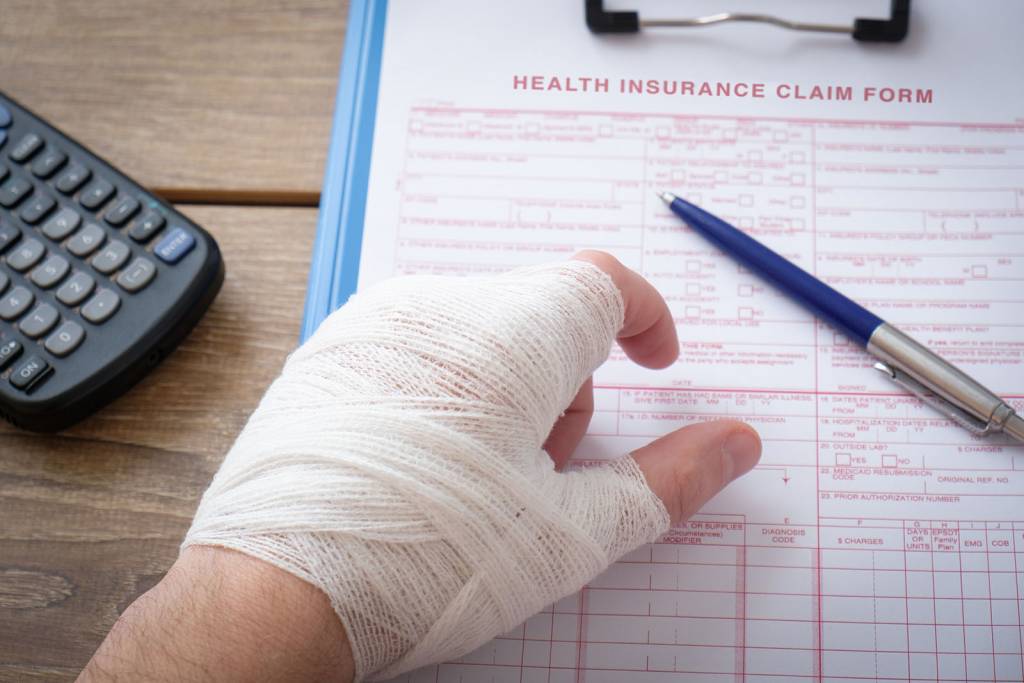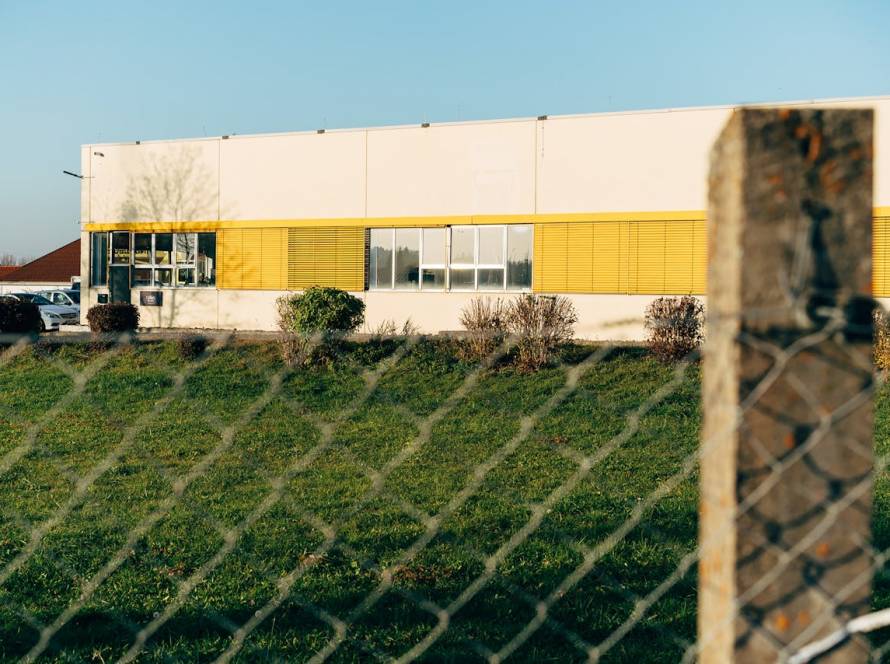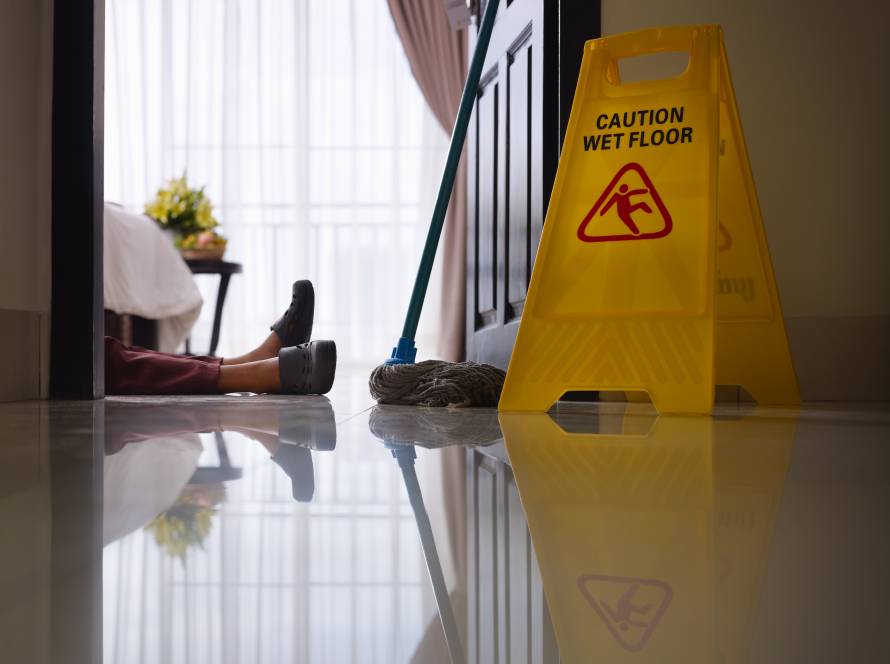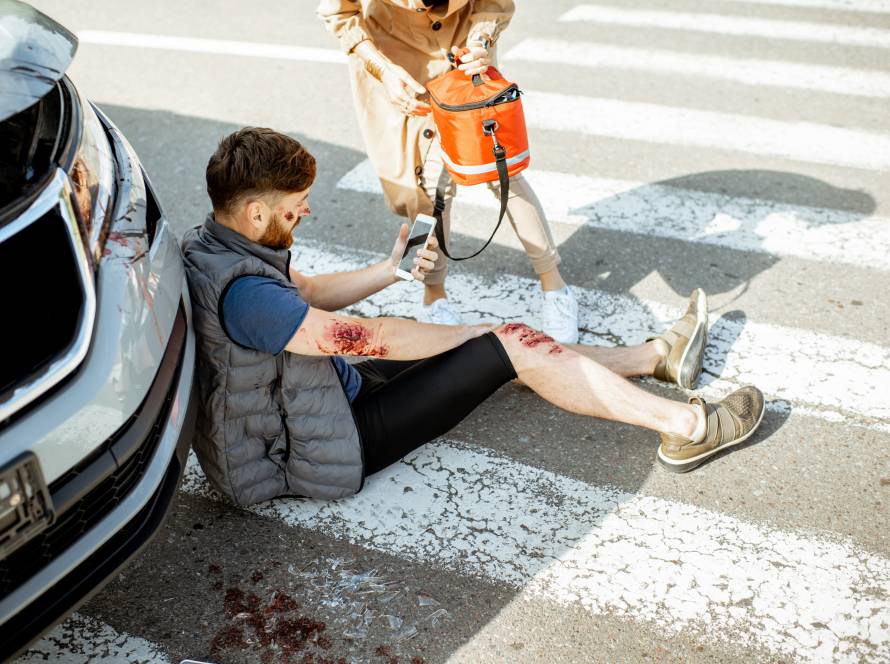The world of slip and fall cases, like many areas of personal injury law, can often feel like navigating through a thicket of legal jargon, court proceedings, and insurance claims. This can be a daunting process for victims seeking justice post-accident. Without a doubt, one of the most pressing questions on every victim’s mind is regarding the potential amount of settlement they might receive. This curiosity is not just about getting a monetary number, but more about gaining a sense of closure and security after an unsettling incident.
Due to the multitude of factors involved, predicting an exact settlement figure becomes a convoluted task. These factors can range from the severity of the injury to the location of the accident or even the particular laws of the jurisdiction. However, gaining insight into these key elements can shed significant light on the potential outcome. Understanding how these factors intertwine and influence the final settlement amount can be critical in managing expectations and planning ahead.
Settlement amounts in slip and fall cases serve a pivotal role. They are fundamentally designed to compensate victims for the injuries and damages they have endured in an accident caused by someone else’s negligence. It’s not just about providing restitution for the pain and trauma harnessed but also about rectifying the impact of the incident on the victim’s life. This could involve coverage for immediate and future medical costs, loss of earnings, and even compensation for reduced life quality in some cases.
But it’s essential to remember that these compensations are far from being a one-size-fits-all outcome. They fluctuate significantly from case to case, given the unique circumstances surrounding each incident. The intricacy of these cases stems from the need to carefully weigh a variety of influencing factors, each one playing out its role in the final determination of the settlement amount. With all these elements at play, a slip and fall case becomes much more than just a legal battle – it becomes a journey of recovery, justice, and fair restitution.

Factors Affecting Slip and Fall Cases Settlement Amounts
Severity of the Injury
The severity and nature of the injury sustained in a slip and fall accident are essentially the primary points of consideration when it comes to negotiating a settlement amount. They are tier one factors, if you will, that instantly set the tone for the level of compensation to be sought after.
When we talk about severity and nature, it encapsulates a spectrum of injuries – from minor sprains and bruises to debilitating fractures and long-term impairments. The graver the injury, the greater can be the direct economic impact (such as medical costs) and non-economic impact (such as pain and suffering) on the victim’s life. The settlement amount, therefore, factors in these impacts to serve as adequate restitution.
Medical expenses are one of the key components of economic damages. They provide a concrete starting point for determining the financial price of an injury. What’s crucial to understand here is that the assessment of medical costs is not limited to immediate expenses like emergency room bills, radiology fees, or surgical treatments. It extends to account for future medical expenses that might be necessary as the healing process unfolds.
For instance, a case where the victim has sustained spinal injuries might require extensive rehabilitation, regular physiotherapy, or even long-term nursing and personal care. These are real expenses that the victim might not be able to bear because they were a result of an accident caused by someone else’s negligence. Therefore, the settlement amount strives to ensure these future costs are covered in addition to immediate medical expenses.
Now, not all damages sustained in a slip and fall accident are tangible or can be measured in terms of dollar amounts. Non-economic damages represent those subjective, non-monetary losses that are linked more to the impact of the injury on the quality of life. Pain and suffering is a major category within non-economic damages and can significantly influence the overall settlement amount.
Pain and suffering caused by an injury go beyond mere physical pain. It also takes into account the emotional anguish and psychological impact of experiencing a traumatic incident or living with a debilitating injury. It paints a holistic picture of the victim’s ordeal post-accident – the anxiety of medical treatments, the distress caused by the inability to partake in everyday activities, and the general decrease in the enjoyment of life. Including pain and suffering appreciates the profundity of an injury’s impact, providing a more rounded justification for the settlement amount.
Fault and Liability
When it comes to settlement amounts in slip and fall cases, determining fault and liability plays a critical role. A decisive factor in assessing the settlement sum is the ability of the victim to prove the property owner’s negligence. In essence, the victim must establish that the property owner failed to maintain a safe environment or did not rectify a hazardous condition, directly causing the accident. When a higher degree of negligence is attributed to the property owner, the possibility of larger settlement amounts correspondingly escalates. Portraying the negligence of the property owner can often be a make-or-break aspect of such cases, as legal proceedings rely heavily on the preponderance of evidence in establishing who bears responsibility for the incident.
Loss of Income and Future Earning Capacity
Loss of earnings due to an accident is a paramount factor that can significantly sway settlement amounts in slip and fall cases. When injuries lead to an inability to work, whether temporarily or permanently, that forms a substantial economic impact that must be mitigated. Temporary loss of work capabilities might need convalescence and rehabilitation, while permanent work inability can be a result of a devastating injury causing lasting or irreversible impacts. These situations directly translate to lost wages, an economic loss that the victim wouldn’t have had to incur if it weren’t for the accident. Therefore, the goal of the settlement aims to accommodate this loss, helping the victim avoid financial instability and maintain their quality of life.
On occasion, slip and fall injuries can have severe and lasting repercussions that extend beyond immediate loss of earnings. In these extreme cases, they might detrimentally affect the victim’s capability of future earnings. This could be due to long-term disabilities, psychological distress, or need for prolonged medical care that impedes their ability to continue in their current profession or work altogether. This scenario could sharply reduce or entirely eliminate the victim’s earning capacity for an indefinite period, launching them into a realm of financial instability. Therefore, to ensure justice and fairness, the compensation in these cases may be adjusted to account for the effective loss of potential income, playing a pivotal role in influencing the final settlement amount.
Insurance Coverage
The defendant’s insurance coverage frequently plays a significant role in dictating the limit of settlement amounts in slip and fall cases. The extent of the defendant’s insurance policy serves as a financial cushion accessible for settlements, ultimately representing the maximum possible compensation that can be disbursed. Consequently, instances where the negligent party lacks sufficient insurance coverage or doesn’t possess sizeable assets can considerably limit the actual amount a victim may receive in a settlement. This practical constraint underlines the importance of thoroughly investigating a defendant’s financial capacity during the legal process to help victims realistically gauge potential settlement outcomes.
Strength of Evidence
The strength and cogency of evidence can often form the backbone of successful slip and fall cases. In scenarios fraught with the complexities of determining liability and potential settlement amounts, evidence elevates from being mere supporting facts to being the foundation of a case. Indeed, the presence of irrefutable evidence, like photographs clearly illustrating the hazardous circumstance that culminated in the accident, adds a compelling visual dimension to the narrative of negligence being portrayed. Photographic evidence can convincingly substantiate the claims of a dangerous environment, building a reasonable link with the resultant accident. This unabashed presentation of reality can aid immensely in shaping the liability discourse favorably towards the victim.
In addition to visual evidence, written or verbal records like witness testimonies and medical documents can provide vital reinforcement to a victim’s claim. The corroborating assertion of an independent witness can bring unbiased third-party perspectives into the mix, thus giving more credibility to the victim’s account of the incident. Additionally, medical records serve as an objective measure of the severity of injuries sustained. They present a detailed and undeniable proof of harm suffered due to the slip and fall accident. Furthermore, they can influence the calculation of the potential settlement amount by documenting the direct and consequential costs linked to the inflicted injuries. Therefore, the availability and utilization of well-rounded, irrefutable evidence play a pivotal role in making a slip and fall case more compelling and potentially increasing the settlement amount.
Examples of Slip and Fall Cases Settlement Amounts
Settlement amounts in slip and fall cases span a wide range, depending on numerous interrelated factors. These amounts can broadly be categorized into high-value, moderate, or low-value settlements.
High-Value Settlements
High-value settlements typically involve catastrophic injuries or permanent disabilities resulting from a slip and fall incident. For instance, victims who suffer a traumatic brain injury, spinal cord damage, or any lingering ailment that irrevocably alters their life could potentially garner a high-value settlement. Such determinations are generally due to the excessive medical costs, transformative changes to lifestyle, and significant earning capacity losses that these serious ailments can entail.
Moderate Settlements
Moderate settlements, quite expectedly, correspond to circumstances less severe but nonetheless substantial. These may involve injuries needing surgeries and extensive rehabilitation, like a broken hip needing surgery and physiotherapy, or situations where the victim suffers a temporary disability. In such instances, the victim might endure considerable expenses for their medical care, and they might also experience a temporary loss of income, leading to a moderate-value settlement to cover these as well as non-economic damages like pain and suffering.
Low Value Settlements
Low-value settlements are typically associated with instances where the victims are injured but make a full recovery or require limited medical treatment. For instance, minor injuries like sprains or fractures that heal without any sustained impact on the victim’s life may fall into this category. With less impact on the victim’s health, lifestyle, and finances, these cases tend to result in lower settlement amounts. As law seeks to make victims whole rather than enrich them, such less severe injuries logically lead to lesser compensatory damages.
How to Maximize Slip and Fall Cases Settlement Amounts
Hiring an Experienced Personal Injury Attorney
One of the most effective ways to maximize the settlement sums in slip and fall cases is by hiring an experienced personal injury attorney. A seasoned attorney, intimately acquainted with the intricacies of personal injury law, would be well-positioned to represent your interests assertively in negotiations with insurance companies and, if necessary, litigation.
Their competence and knowledge in handling similar cases can help navigate through the complexities of the law, discern the ultimate worth of your claim considering all possible damages, and ensure that your rights are adequately protected. They can build compelling cases backed by robust evidence, efficient strategies, and adept negotiation techniques.
Moreover, attorneys can guide you through the medical evaluation process to ensure the injuries are thoroughly documented, they can calculate reasonably claimed future medical expenses, and they can help establish the proof of fault by exploring all liability theories.
By serving as your advocate, a personal injury lawyer can significantly influence the magnitude of your settlement, striving to maximize the damages recoverable and ensuring you receive just compensation for your injuries. Their ability not only to traverse the legalese but also to connect with the narrative of your distress and convey it powerfully can underscore the validity and value of your claim.
Proper Documentation and Reporting
To maximize settlement amounts in slip and fall cases, thorough documentation and diligent reporting of the incident and subsequent injuries are essential. Adequate documentation begins at the scene of the accident, where taking photographs of the perilous condition that caused the fall can help illustrate the severity and nature of the hazard. Additionally, collecting personal information and statements from any potential witnesses can contribute to a more comprehensive understanding of the event’s circumstances. It’s also necessary to report the incident promptly to the appropriate parties, such as the property owner or manager, and maintain a record of the incident report. It’s crucial to make sure all these records are safely stored since they form a part of the critical evidence necessary to substantiate your case.
Equally critical is the documentation of the medical treatments and procedures that follow the slip and fall accident. This requires conscientious accumulation of all medical reports, bills, and receipts related to the examination, treatment, and rehabilitation processes. The details encompassed in these medical documents – from the diagnosis and treatment plan to the recovery progress and future health predictions – can comprehensively establish the extent of your injuries and the associated medical expenses. Additionally, it’s essential to keep a personal journal documenting your physical and emotional distress during recovery. This combination of stringent medical evidence with your personal reflections can powerfully illustrate your hardship and suffering. Hence, meticulous documentation and prompt reporting can play a pivotal role in maximizing your settlement amount by firmly substantiating your claim.
Timely Medical Treatment and Ongoing Care
Timely medical treatment and ongoing care are critical to maximizing settlement amounts in slip and fall cases. Acquiring medical attention immediately after the incident underlines the seriousness of your injuries, provides you with necessary care, and develops a detailed and prompt medical record linked to the incident. This medical record is indispensable in substantiating the direct correlation between the fall and your injuries. Furthermore, following through with all prescribed therapies and treatments showcases your commitment towards recovery and creates a comprehensive treatment timeline, which can help quantify the extent and cost of your damages. These diligent practices of immediate medical attention and ongoing care serve dual purposes. They not only ensure your health is restored to the best possible condition but also consolidate a compelling medical evidence portfolio for your claim, thereby potentially increasing your settlement amount.
Accurate Calculation of Damages
In calculating damages in a slip and fall case, it is critical to make sure that the amount claimed is as accurate as possible. Instead of estimating your losses, you should meticulously compile all existing and future expenses related to your case, including but not limited to medical bills, lost wages, reduced earning capacity, and rehabilitation costs. Accounting for non-economic damages, such as pain, suffering, and emotional distress, enhances your claim’s totality. Engaging an experienced attorney can be beneficial in constructing a comprehensive, legally grounded, and realistic calculation of damages. This precise evaluation can give your claim a solid financial footing, reducing chances of undercutting your rightful compensation and potentially increasing the settlement amount.
Persuasive Negotiation and Presentation Skills
Skilled negotiation and presentation skills are essential in settlements involving slip-and-fall claims. Being able to effectively communicate the details of your case, the depth of your pain and suffering, and articulating the strength of your claim not only to opposing parties but also in court, if necessary, can have a profound impact on the final outcome. An adept personal injury attorney can employ proficient negotiation strategies, present your case compellingly, and highlight persuasive evidence to support your claim. By projecting confidence and poise, they can navigate negotiations and assertively counter any opposing arguments or tactics. As such, these skills can contribute directly to increasing your potential settlement value.
Maximize Your Slip and Fall Settlement with Hines Law’s Expertise and Comprehensive Support
In conclusion, engaging with Hines Law, an experienced Orlando personal injury attorney law firm, could be instrumental in forming a robust claim strategy for slip and fall cases. A systematic, evidence-supported strategy amplifies the merit of a victim’s case, efficiently communicating the circumstance’s gravity and the associated damages. Creating such a strategy with professional guidance ensures that each component, from evidence gathering to claim filing, is dealt with meticulously. This strategic coherence contributes significantly to the comprehensiveness and credibility of the claim, embodying a persuasive narrative required to substantiate liability and maximize potential settlements.
Moreover, patience remains an indispensable virtue in handling slip and fall incidents. These cases often come layered with complexities, requiring intricate navigation of liability laws, tedious collection and review of evidence, potentially lengthy negotiation and litigation. Hines Law ensures the personal attention clients deserve, helping them remain patient and clarified throughout this potentially extensive and complicated process. This combination of professional support and client patience effectively manages the complexities, making way for a successful resolution to your case.




